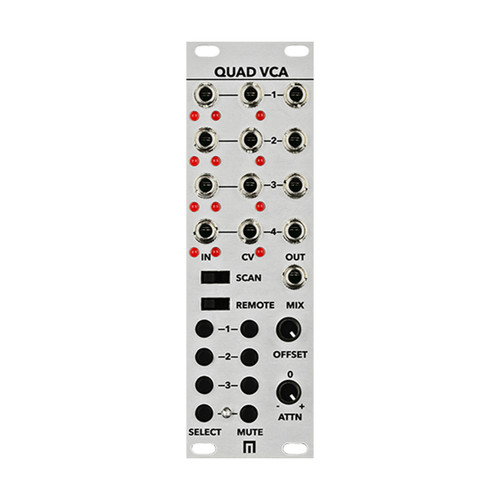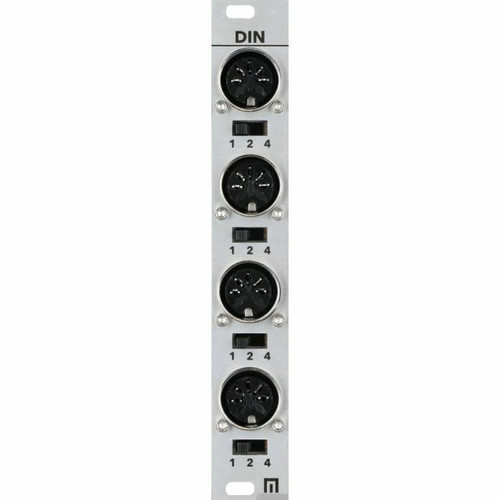The Richter NoiseRing in eurorack format. Sanctioned by Grant Richter of Wiard Synthesizer Company, this module is the same as the original Wiard Model 1210, only in 14hp eurorack format.
» Digital Noise Source
» Pseudo Random Shift Register.
» Clock Input with External Rate control knob
» Clock Output
» Noise Output
» 2 Random Voltage Outputs
» Chance Input
Based on a shift register, the Noise Ring processes its 8Bit information and reads them into its memory as a repetitive random sequence. Stepping through the eight steps of this sequence is done by external or internal clock. The rate control sets the internal clock rate.
The Change potentiometer affects, if and how many new data are read into memory. The more new data, the more the sequence changes.
The Chance control determines if the new data that is to be writtten into memory (derived from the noise source) contains "ones" or "zeroes". You can input external data, eg an oscillator (!) into the Chance Input
The random voltage outputs 1 and 2 have an amplitude of 0-10V and give quantized voltages. Either it quantizes to 1V steps (octave intervals) or 1/12V (semitone intervals).
The External Rate control randomizes the internal clock (one of the random outputs is pre-patched to the ExtRate jack), but you can input other signals as well.
Clocks in audio rates make the NoiseRing play digital tones which can range also into digital noise. The Change control has a big effect on the sound character.
Product Overview
The Richter NoiseRing in eurorack format. Sanctioned by Grant Richter of Wiard Synthesizer Company, this module is the same as the original Wiard Model 1210, only in 14hp eurorack format.
» Digital Noise Source
» Pseudo Random Shift Register.
» Clock Input with External Rate control knob
» Clock Output
» Noise Output
» 2 Random Voltage Outputs
» Chance Input
Based on a shift register, the Noise Ring processes its 8Bit information and reads them into its memory as a repetitive random sequence. Stepping through the eight steps of this sequence is done by external or internal clock. The rate control sets the internal clock rate.
The Change potentiometer affects, if and how many new data are read into memory. The more new data, the more the sequence changes.
The Chance control determines if the new data that is to be writtten into memory (derived from the noise source) contains "ones" or "zeroes". You can input external data, eg an oscillator (!) into the Chance Input
The random voltage outputs 1 and 2 have an amplitude of 0-10V and give quantized voltages. Either it quantizes to 1V steps (octave intervals) or 1/12V (semitone intervals).
The External Rate control randomizes the internal clock (one of the random outputs is pre-patched to the ExtRate jack), but you can input other signals as well.
Clocks in audio rates make the NoiseRing play digital tones which can range also into digital noise. The Change control has a big effect on the sound character.







